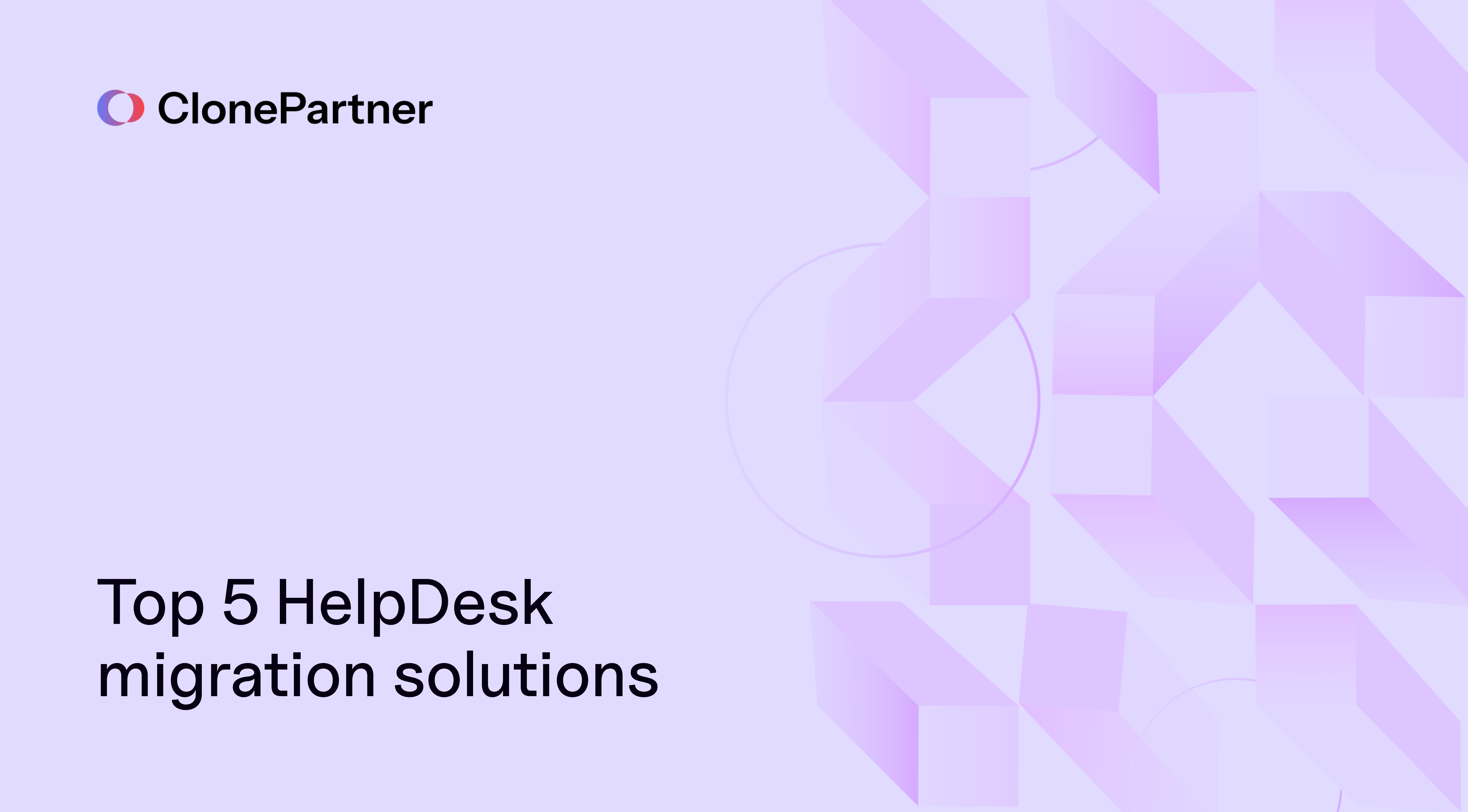
Help Desk migrations can be a complex and daunting task. Choosing the right migration solution is crucial for a fast, smooth transition and to ensure the integrity of your customer support history. This guide will walk you through the top 5 help desk migration solutions, helping you make an informed decision for your business.
1. ClonePartner: Engineer-Led HelpDesk Migration Service
A specialist, engineer-led service for custom help desk migrations. It's particularly useful when you need precise field mapping, preserve relationships accurately, maintain full history, and proper cutover planning. It's great when one-click tools or CSV imports can’t handle the data complexity.
Pros:
- Offers tailored, engineer-led migrations with field-level mapping and validation loops, reducing risk on tricky objects and history. ClonePartner engineers handle the migration, so your team can focus on your real work.
- Built to handle imperfect data gracefully. Empty fields, spelling errors, inconsistent formats, multilingual data, ClonePartner treats them as natural variations, not deal-breakers. Each case is resolved with pre-migration analysis and validation loops.
- Accepts any source format. CSV, Excel, PDF, DOC, API, or Legacy ERPs. Even if your data looks nothing like what the new system expects, ClonePartner restructures and standardizes it for a flawless import.
- Offers unlimited sample and delta migrations to fine-tune every detail and keep your data up to date. Whether your records are multilingual or packed with unique naming conventions, you can test, review, and perfect your mapping before the final migration.
Cons:
- The process is intentionally collaborative, requiring some stakeholder alignment. But it is still faster than automated tools.
- Relies on clear communication between technical and business stakeholders to make sure every mapping reflects real-world use.
2. Help Desk Migration: Guided HelpDesk Migration Flow
A guided Help Desk migration platform with pre-built flows to popular help desks. It comes with chat support, free demos, and sample migrations, which is helpful when you want to test the process before a full run. It's best for teams that want a self-serve solution with some guidance and visibility into object mappings.
Pros:
- They offer ready-made migration flows for common help desk destinations.
- The service includes options for assistance and free test migrations to ensure everything is correct.
- They have public pages that outline the supported entities and common object mappings, which aids in scoping your project.
Cons:
- The public documentation can be fairly broad, and you may need to contact support to confirm if niche objects or special cases are covered.
- Complex, non-standard relationships or heavy data transformations might necessitate professional assistance beyond what their default flows offer and can end up consuming a lot more time and effort than planned.
3. Import2: Automated HelpDesk Migration Platform
An automated Help Desk migration platform that offers direct integrations for running samples, applying mappings, and performing full migrations into various target help desks.
Pros:
- Provides transparent documentation on which objects from the source help desk are supported for migration.
- The platform is sometimes integrated directly into the import flow of some help desks, simplifying the setup process.
Cons:
- There are limits on which objects can be imported or exported, as specific ticket histories or custom fields might not be supported.
- Advanced data transformations and unique data relationships may not be possible.
4. DIY: Scripted HelpDesk Migration Approach
This approach involves exporting, cleaning, transforming, and reimporting your help desk data manually through APIs or CSVs. It works best when you have internal technical resources and flexible timelines.
Pros:
- Full control over mapping and data transformation logic. You decide how every record maps over.
- No external software cost if your team already has engineering bandwidth.
Cons:
- High manual effort to maintain complex relationships between entities.
- Easy to miss dependencies or lose history without consistent testing or rollback plans and often entails longer timelines.
5. Native Importers: Built-In Help Desk Migration Tools
A few help desks provide their own built-in import tools, though these are typically limited to users or basic ticket data. They can be helpful for small, simple migrations but rarely handle full historical transfers.
Pros:
- Built directly into the platform—no need for external tools or credentials.
Cons:
- Usually restricted to user imports or very basic ticket data
- Lack of flexibility and no control over mapping or validation, often requiring follow-up cleanup.
Every help desk migration comes with trade-offs between control, effort, and accuracy. Automated tools like Help Desk Migration and Import2 can be fast for smaller datasets but often struggle with historical depth. A DIY approach gives full control but carries high risk without experience. For complex migrations involving thousands of tickets, attachments, or automation workflows, a specialized service like ClonePartner offers the safest path with engineering oversight and repeatable validation.
FAQs: